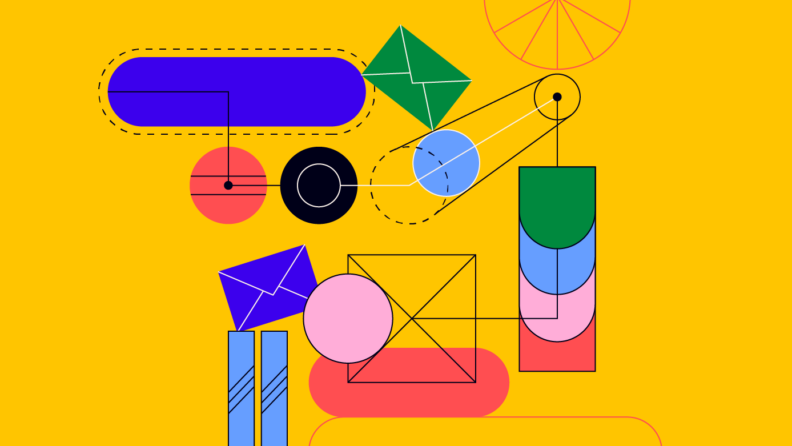All marketers know that email marketing is essential (according to Omnisend, it consistently ranks as the marketing channel with the highest ROI, with returns between $36 to $40 for every dollar spent), but how do you consistently deliver quality email campaigns as your business, email list, and customer base grows?
That’s where email marketing automation comes in. Think of it as the magic wand you need to achieve climbing customer engagement—all without the correlating huge marketing team or deep-pocket budget.
In this article, I'll answer the question ‘what is email marketing automation’ and explain how you can use it to build customer relationships, maintain engagement and ensure you hit your marketing automation ROI goals, no matter how big your business becomes.
What Is Email Marketing Automation?
Email marketing automation is an easy way to send newsletters and messages to your email list without having to do the work every time.
Through the use of email marketing automation software, you can create emails that automatically send when certain triggers take place—such as when a new subscriber signs up to your mailing list—or a sequence of emails with different variations and automation features.
Is it really that simple?
This may sound pretty basic, but email marketing automation can be incredibly nuanced and sophisticated if you have the right subscriber data. It can allow you to create automated email flows which use custom fields and segments to send targeted emails to thousands (or hundreds of thousands) of customers at varying stages of the buyer journey across different locations and time zones.
Essentially, email marketing automation means you can create personalized emails to go to an unlimited amount of email subscribers at a time that’s convenient for you. And who doesn't love that? Truthfully, it's the only way to keep up as your business grows, and it's imperative that you do.
What Are the Benefits of Email Automation?
According to Campaign Monitor, automated emails are reported to generate a staggering 320% more revenue than non-automated emails, but that’s not the only benefit. Email automation can deliver a whole host of advantages, such as:
It Makes Your Email Marketing Strategy Scalable
Whether you’re the CMO in a large organization or a one-man marketer in a small business, you always need to make sure you're making the most of your resources. Email automation software enables you to implement a sophisticated email strategy no matter how big your contact base.
Let’s say you want to run a series of emails to promote a new product range. If you were doing this manually, you or a member of your team would have to set up your email list and send out each email individually. With email automation, it's really as simple a these three steps:
- Segment your customer list
- Set up the email templates
- Schedule the emails
You can even add conditions to the campaign so that the content within the email series changes depending on customer demographics like location, age, gender, or previous buying habits—the options are endless.
Email automation is infinitely scalable and was particularly useful to me when I worked as the sole marketing manager in a busy legal services firm. Using AI and email automation, I was able to deliver effective email campaigns to our growing contact list while still managing all my other marketing activities.
It Improves the Customer Experience
Did you know that 90% of consumers find personalized content “very or somewhat appealing”? Nowadays we expect companies to engage with us on an individual level—we want to see marketing content that is completely relevant to us and our buying preferences, anything less feels out of touch.
With email automation software you can segment your contacts according to their engagement with your brand, purchasing behavior and attributes like:
- Demographics: such as education, age, credit scores, and marital status.
- Psychographics: such as activities, interests, attitudes, values, and lifestyle.
- Firmographics: such as the organization’s name, locations, and revenue.
- Technographics: such as the technology owned or used by the prospect.
- Geographics: such as the home, office, vacation home, or other place.
This allows you to send out automated emails to your contacts which are highly personalized and relevant. In turn, you can create a better customer experience for those on the receiving end.
Email automation also reduces human error. Because you’re not manually compiling lists and pressing send on individual emails, the chances of you sending out inaccurate emails or forgetting to send them altogether is minimal.
It Improves Re-Engagement and Retention
Because you can engage with customers at scale, email automation makes re-engagement and retention far easier. You can set up automated email flows so that subscribers hear from you on a regular basis, no matter how busy you are with other marketing projects. You can also set up automated re-engagement emails to reconnect with contacts who may be considering unsubscribing.
By staying top of mind (or top of inbox), it makes it far easier to keep engagement and retention levels high. With personalization, you can boost conversion even further. For example, if a customer last purchased a digital camera from you, why not offer them a discount on a new camera lens?
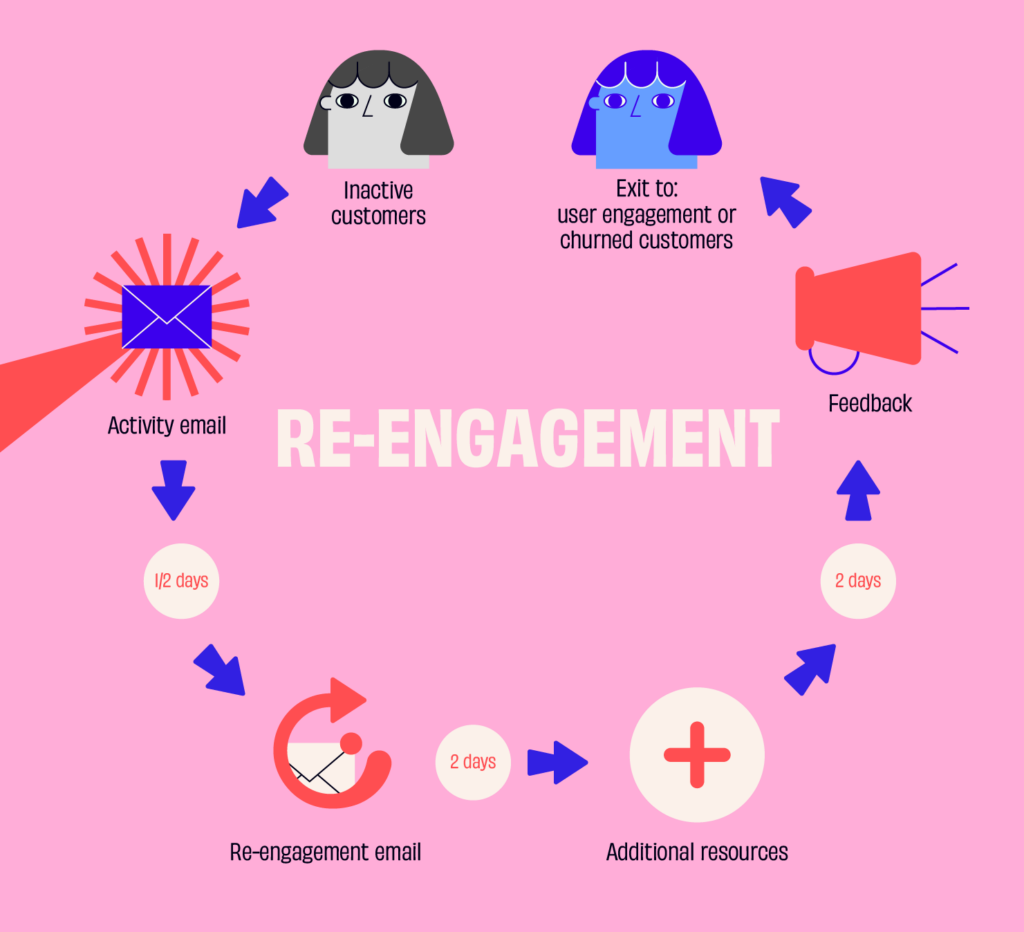
It Makes Your Workflows More Efficient
Possibly the most convincing argument for email marketing automation is the time it can save you and your team. In the days before marketing automation software, I used to painstakingly type out email addresses from excel spreadsheets and send out emails in batches so as not to overwhelm our email system. It sounds archaic, and it was. Thank goodness those days are gone!
Many of the big email automation providers also integrate with your marketing CRM software, website, social media accounts, and other marketing platforms to keep subscriber information up to date across all channels.
It Optimizes Costs
Not only was the old manual email system time consuming, it was costly. Sending out emails was a full-time job—not a great use of manpower, particularly in small businesses with limited resources.
Prior to email automation workflows, it was often necessary to use multiple marketing programs for a single campaign. For example, you might have to use a contact database, design software and a project management tool to stay on top of it all. Now, all these are combined within a single email automation tool which is not only easier to use, but keeps your MarTech stack costs down, too.
It Provides Useful Analytics
Yes, you can get data from a manual email campaign but you can get so much more from automated email marketing campaigns due to the sheer scale of emails you're sending. Prior to email automation, it took weeks to compile open and response rates from individual email campaigns. Now, you can collect data from a whole series of email workflows with just the click of a button.
Email automation providers like HubSpot provide access to a whole host of email marketing analytics tools, which in turn provide insights on:
- Open rate
- Clickthrough rate
- Unsubscribe rate
- Conversion rate
- List growth rate
- Sharing rate
It also makes it far easier to run A/B testing for your emails. You can send out thousands of emails with different subject lines or CTAs and get back meaningful data in real time to support your marketing efforts. Just remember, when doing A/B testing you only want to change one thing up at a time.
What Types of Email Marketing Automation Exist?
Welcome Emails
Perhaps one of the most important emails you’ll send your subscribers is the welcome email upon subscription. It marks the start of the customer journey, and statistics show that subscribers are 4 times more likely to read a welcome email than standard marketing emails, so you need to make it count.
By using email automation, you can ensure that new subscribers receive a personalized welcome email as soon as they sign up. This is really important as they are far more likely to open your email while you’re top of mind. If you don’t send your welcome email on time, your first email risks not being opened and you could find all your subsequent emails relegated to spam.
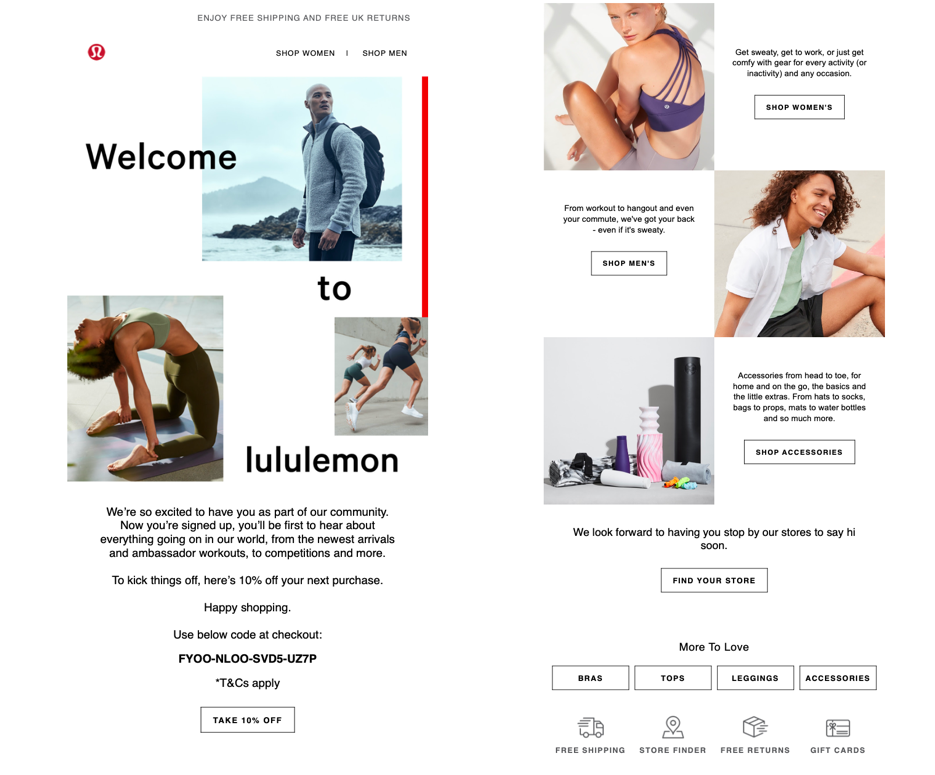
Onboarding Emails
Onboarding emails can play a vital role in moving customers down the marketing funnel towards making a purchase. They are particularly useful for businesses which sell high-ticket items like software or technology, where potential customers are likely to spend time considering whether to purchase.
Onboarding emails are typically sent after a welcome email and are designed to build trust in your brand and products. If you’re selling software, you could include a FAQ within the email content that answers potential questions and helps overcome barriers to purchase. You could also consider sharing testimonials from existing customers to show how your product helped them.
The purpose of an onboarding email is to nurture leads. As onboarding emails have a high open rate, it offers a great opportunity to build a connection with your customer that will in turn increase the chances of repeat purchases.

Weekly/Monthly Newsletters
Regular newsletters can be a great way to maintain engagement with your contacts and provide additional value to existing and prospective customers.
The beauty of automated email campaigns is that you don’t necessarily need to write these emails from scratch each week. If you’re writing about topics that don’t typically change that often, you could set up an evergreen newsletter where you create a series of emails in one go and then send them out weekly to contacts. Some email marketing software will even pull new articles from your website and automatically put them into a weekly email format for you.

New Product or Promotion Emails
Email is a powerful way to drum up interest and sales for a new product or promotion, but did you know that automated emails have a conversion rate which is 180% higher than batch emails?
If you're working in a sector like fashion, apparel, or beauty, chances are you’re going to be running frequent new product campaigns. Email automation allows you and your team to set up all the emails in one go and schedule them to go out at the appropriate time for your customers. This is particularly useful around busy shopping periods like Black Friday or Boxing Day when you might have several promotional campaigns running at one time.

Product Inventory Updates
Did you know that some email automation providers like Klaviyo and Drip—which are specifically designed for ecommerce—can integrate directly with your inventory management and sales systems? With tech like this, you can set up emails to send automatically when a sold-out product comes back in stock.
Companies like Myntra take it a step further and allow customers to select to receive a notification when an out-of-stock item is back and available for purchase. Thanks to an automated email flow, customers get notified the very moment the item is available to buy. This delivers great customer service and, more importantly, ensures that the company doesn’t miss out on any sales.
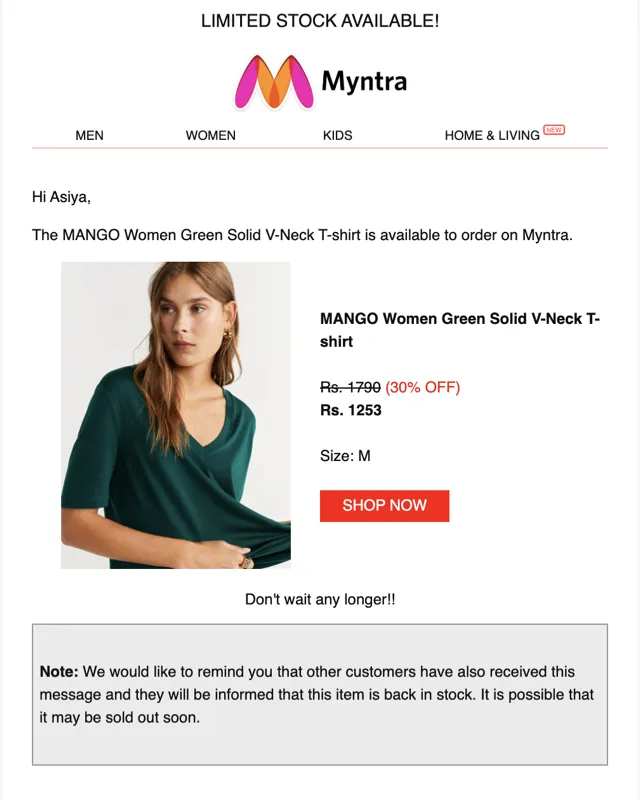
Abandoned Cart Emails
Another popular automated email is the abandoned cart email. How many times have you gone to buy something online and then been distracted half way through? If the company has automated cart abandonment emails set up, you’ll receive an email to remind you to complete the purchase.
And it works. Customers who receive abandoned cart emails are over twice as likely to complete the purchase than those who don't, according to statistics by Campaign Monitor. Often, it's a good idea to include an incentive within the email like a short-term discount code or time-sensitive free shipping.
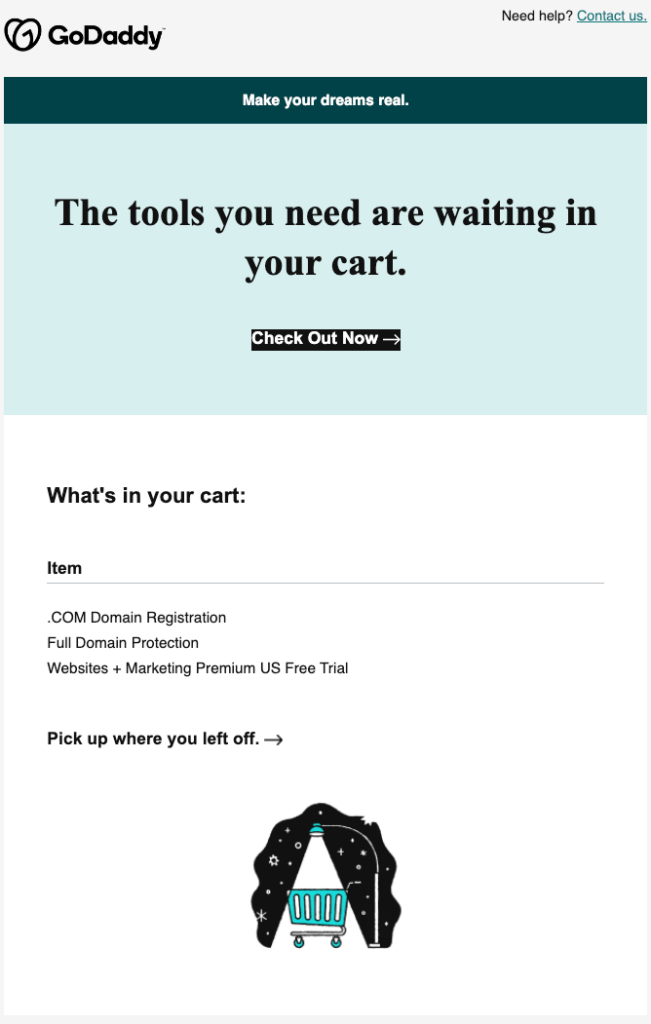
Transactional Emails
Transactional emails tend to have the best open rates of any emails. There are a few different types which I've listed below, but usually they’re the ones that confirm the purchase or notify you when something has been shipped:
- Order confirmation email
- Shipping notification email
- Delivery confirmation email
- User invitation email
- Password reset email
- Payment invoice or receipt email
- Payment failure notification email
Using email automation software you can set up an email to send the moment customers make a purchase, providing all the information they need about the total sale and when they can expect delivery. This is really important for building trust in your brand and also reducing unnecessary customer queries. There's really no room for error with these emails, so automation is essential.
Some customers opt-out of marketing emails, which means the transactional email could be your big chance to give your customer important information. This, together with the high open rate, makes transactional emails a great opportunity to cross-sell other products or provide insight into your brand.
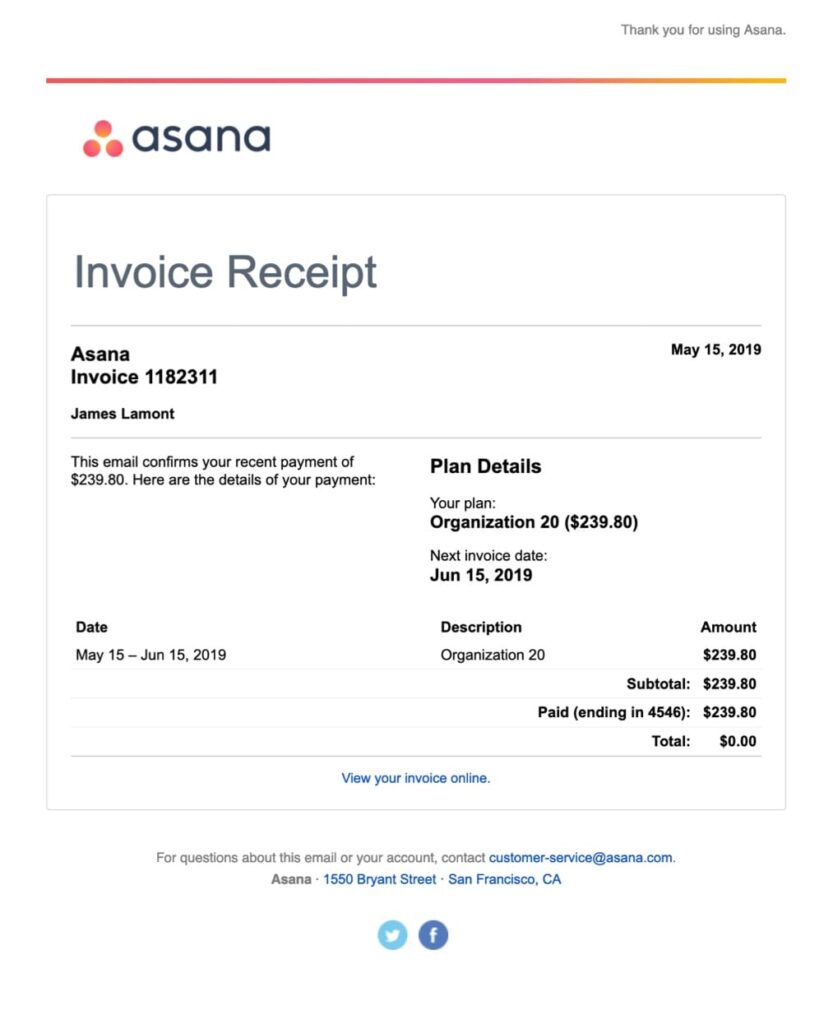
Re-Engagement Emails
It’s no use having a massive subscriber list if no one opens your emails. Re-engagement emails are a useful way to keep your email list engaged and active. For example, you could set a condition within your email automation system so that subscribers who haven’t opened any of the last 4 emails receive a free guide or special promotion to encourage them back to your website.
Some brands may even ask subscribers if they'd like to opt-out of receiving further emails. After all, a smaller list of engaged subscribers is far better than loads of inactive contacts.
Whatever you choose to do, setting up an automated email flow can help you to schedule emails that send automatically when a subscriber meets certain criteria, without you having to manually check engagement levels.
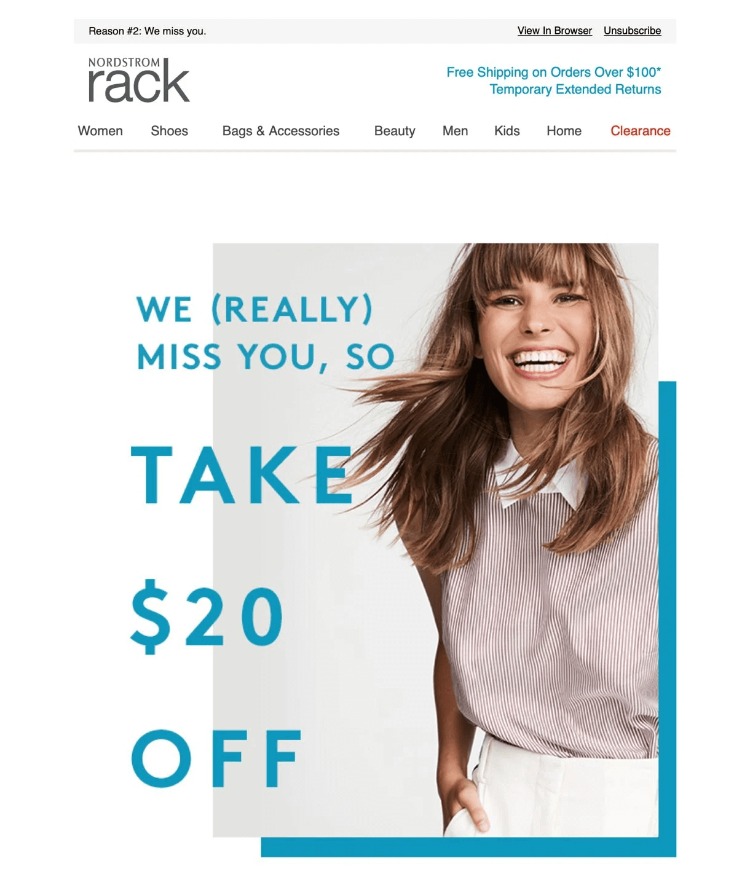
Anniversary or Birthday Emails
Who doesn’t love to receive a celebratory message? Sending highly personalized emails is the key to turning your subscribers into lifelong customers. With email marketing automation, you can set up email campaigns that send tailored email messages to your customers on the most important days, be it a birthday, wedding anniversary or the birth of their child.
Not only will these types of automated emails keep your business front of mind, they can also drive significant sales, particularly if you include one-off discount codes or time-sensitive promotions.
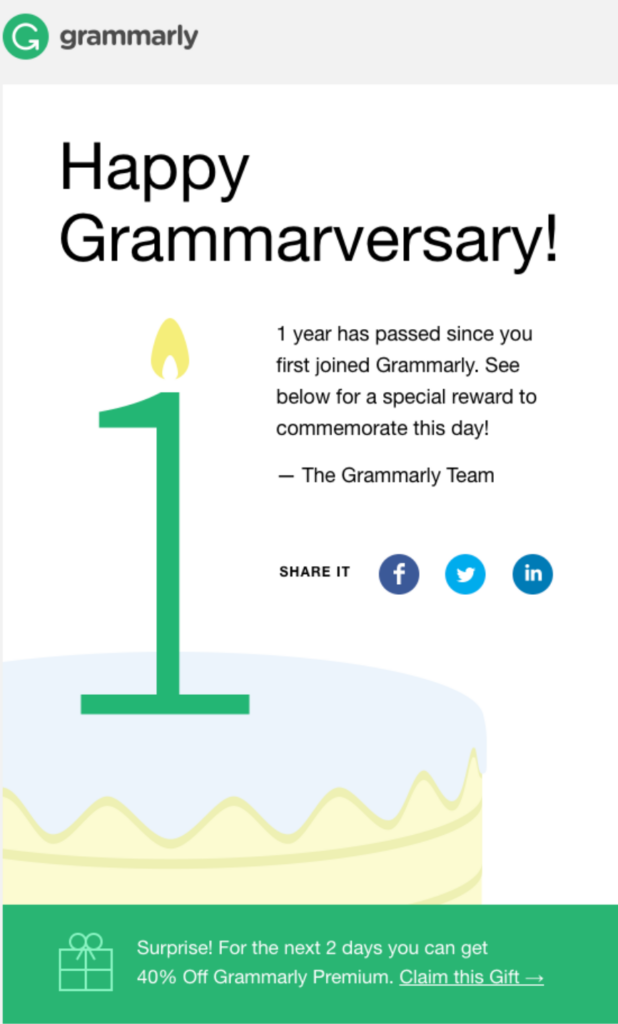
Event and Webinar Reminder Emails
When I worked at a law firm, we ran webinars and events almost every week as a way to engage with new customers and boost lead generation. Back then, we used to send out every reminder email manually and it was a huge time suck.
Email marketing automation means you can schedule all your reminder emails in advance to send to those who are RSVP'd as attending. This not only saves you much needed time, but ensures that those all-important reminder emails get sent in a timely manner and don’t end up at the bottom of your to-do list.
Some email marketing automation tools will even integrate with your webinar hosting and landing pages to make lead nurturing even easier.
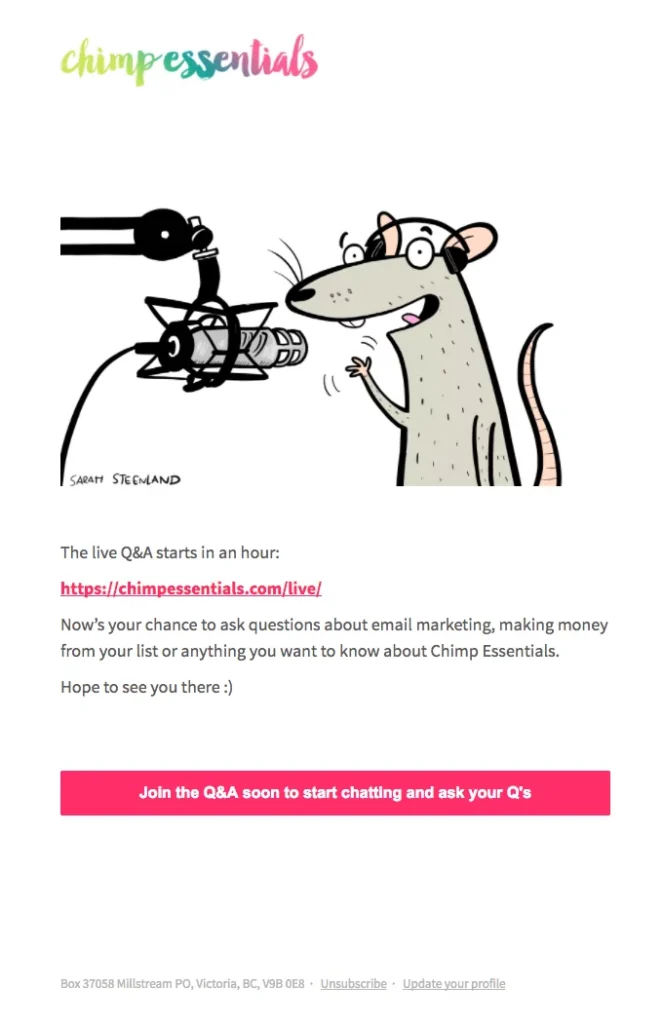
Surveys and Feedback
Every business needs customer feedback in order to keep innovating, and this is particularly true for businesses offering an ongoing service like accountancy. With automated email software, you can schedule surveys or feedback requests to automatically be sent out after a particular project or time period, allowing you to collect valuable customer intel quickly and efficiently.
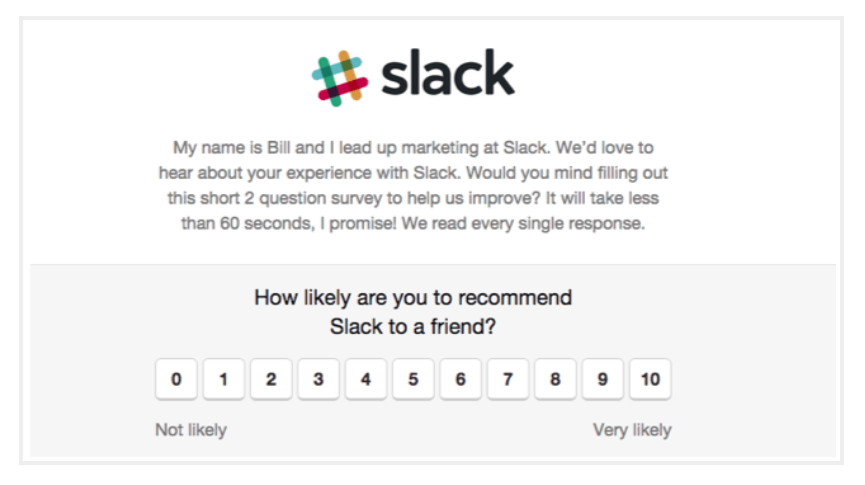
Need expert help selecting the right Email Marketing Software?
We’ve joined up with Crozdesk.com to give all our readers (yes, you!) access to Crozdesk’s software advisors. Just use the form below to share your needs, and they will contact you at no cost or commitment. You will then be matched and connected to a shortlist of vendors that best fit your company, and you can access exclusive software discounts!
Take Off With Automation
Email marketing automation is your magic wand for scaling customer engagement and delivering personalized content without the need for a large marketing team or substantial budget. It's particularly great for:
- Scalability and Efficiency: Allowing the delivery of personalized and relevant content to a growing number of subscribers without increasing workload.
- Enhanced Customer Experience: Improving the customer experience by delivering content that matches individual preferences and behaviors.
- Increased Revenue: Generating significantly more revenue than non-automated emails, making it a highly effective strategy for boosting sales.
If you want to learn more about additional ways to use automation, check out our guide to social media automation.
And speaking of email, don't forget to stay up to date with the latest marketing insights, strategies, trends and tips by subscribing to the CMO newsletter.

